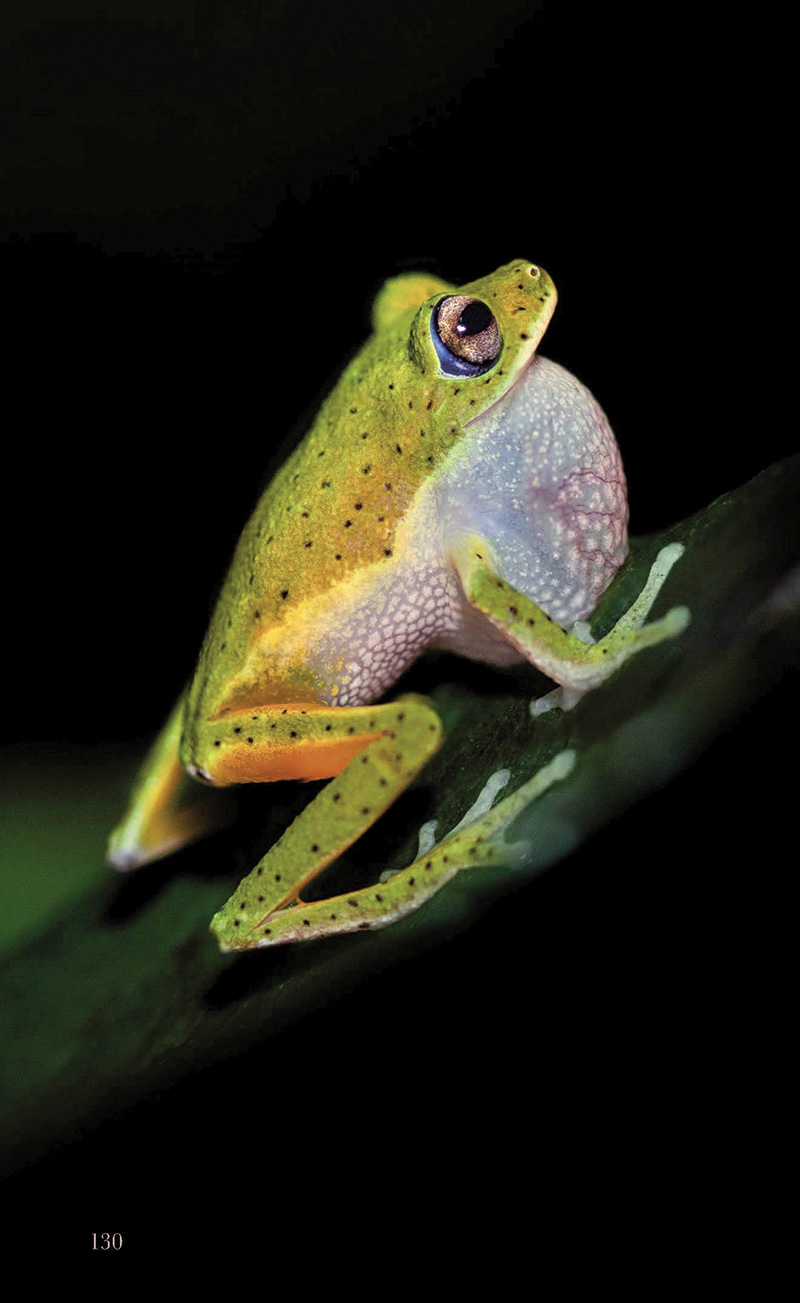Features
Putin’s last stand
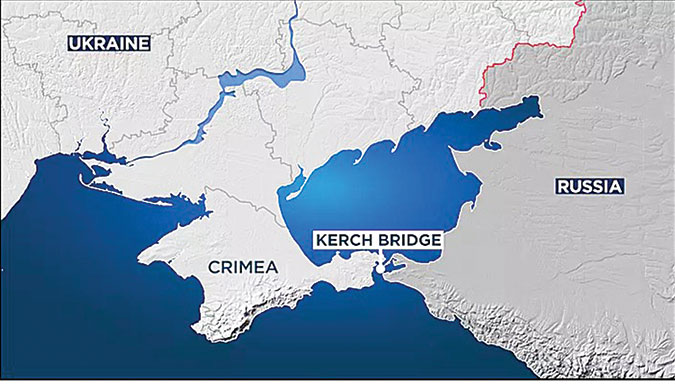
by Kumar David
The title of this little essay must not be interpreted as saying that Putin is finished, dead and awaiting burial; rather it says that Russian President Vladimir Putin is in grave trouble, his military exploits in Ukraine face defeat, internal dissension at home is mounting and how long his regime will survive is an open question. It is this challenge that I intend to write about. I have taken what appears to be the most plausible and self-consistent information from international wire services and media sources and certainly not confined myself to pro-Western outlets.
The most reliable accounts surmise that the Russian offensive in Ukraine is losing ground. The slip is showing even with the Russian news agency Tass refers to Russian attacks on mainly civilian targets and reports, “According to the FSB (Russian Federal Security Service) over the past week, more than 100 shelling attacks of 32 settlements in the Bryansk, Kursk and Belgorod regions were recorded with the use of multiple-launch rocket systems, cannon artillery, mortars and unmanned aerial vehicles”. Other articles signifying Russian military gains can also be found on Tass, for example: “Russian air defences destroy six combat drones in Ukraine operation”; “Ukrainian garrison at Snake Island surrenders to Russian Armed Forces”; “Putin puts nuke forces on high alert; liberation of Donbass continues” etc.
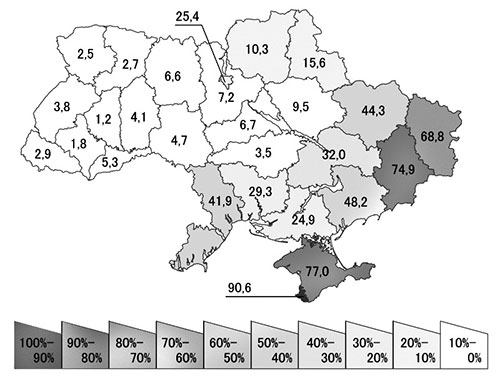
Putin’s balancing act
Western media paints a gloomy picture of Russia’s military position. Independent channels Al Jazeera and Reuters give a more balanced picture. For example, “Russian forces running and panicking during eastern retreat”; “Ukrainian officials accuse retreating Russian forces of retaliatory attacks on civilian infrastructure”; “Putin accuses Ukraine of Crimea bridge blast, calls it terrorism”. The picture on balance is that Russian forces in the Northern, Eastern and Southern theatres, that is on all three fronts in Ukraine are retreating. The collective picture last week may be summarised as: Setbacks for Putin’s war as his troops struggle to hold off a Ukrainian counteroffensive. The Russian military is doing badly, etc. The flurry of Russian missile strikes across civilian and military targets in Ukraine after Ukrainians crippled the strategic Kerch Bridge linking Russia to Crimea is a sign of desperation.
The Hindustan Times (HT) on October 10 in a piece entitled “Where are the Russians dodging the draft fleeing to?” said that Kazakhstan’s interior ministry reported that 98,000 Russians had entered since September 21 the day of Putin’s military call-up announcement. Kazak President Kassym-Jomart added that the country will ensure the care and safety of Russians fleeing a “hopeless situation. HT also reports that a few days ago 5,000-6,000 (Russians) were arriving in Georgia every day and the number has now grown to 10,000 per day”. “Georgia’s interior minister Vakhtang Gomelauri says the Russia-Georgia border was backed-up with 5,500 cars waiting to enter. During the same period, 40,000 fled to Armenia”. There is no hiding the fact that hundreds of thousands of young Russians are fleeing the country to avoid the draft into a hopeless war.
However, there will a vote in favour of joining Russia in the referendum now being conducted by Moscow in the Donbass Region, in the Eastern part of the country abutting Russia – that is the Russian speaking Donetsk People’s Republic and the Luhansk People’s Republic. The referendum also includes two Southern provinces (Zaporizhia and Kerson) abutting Crimea where Russian speakers are just below 50%. The 90%+ vote in favour of joining Russia reported by Moscow in Donetsk and Luhansk is fabricated and imposed by intimidation; maybe it’s nearer 60-70%. However, the anger of Russian speakers in Ukraine against decades of suppression of their language (similar to the sentiments of Lankan Tamils against the language policies of the Sinhala-Buddhist state) is natural and understandable. Annexation of the two Eastern provinces will I assume be announced soon. This ups the ante because any Ukrainian or NATO action in annexed territories will thereafter be an attack on Russia itself.
Russian speakers in Crimea, Donetsk and Luhansk number 77.0%, 74.9% and 68.8%, respectively so it’s a foregone conclusion that the referenda in the two Donbass Region provinces will approve transfer of sovereignty to Russia. Crimea “joined” Russia in 2014. As a thought experiment imagine a Donbass-LTTE which allies itself with a Russian-(I)PKF and is unburdened by a Prabhakaran-like megalomaniac. The outcome for sure would have been far different from what happened in Lanka in the 1990s.
The picture I have painted thus far is a mixed one. Putin’s forces face military defeat at the hands of the plucky Ukrainians but to counter this he will gain a paradoxical political success by uniting the Russian speaking people of Eastern Ukraine with the “fatherland”. Nevertheless, political instability on the home front is troubling because the economy is fragile even sans sanctions, the currency is depreciating as the rouble collapses and supply chains are disrupted. Domestic opposition is mounting and moderately large public demonstrations break out from time to time against the war. Though Putin commands the support of 60-70% of the population and will win an election at this time, the same cannot be said of the war. The war is unpopular. But for NATO’s attempt to encircle and weaken Russia which outrages every Russian, a referendum to pull-out of Ukraine will succeed at this time. There are reports that in February 2022, some 30,000 technologists, 6,000 medics, 3,400 architects, 4,300 teachers, 17,000 artists, 5,000 scientists, and 2,000 actors and creative artists signed an open letter calling on Putin to stop the war.
Nevertheless, the likelihood of Putin being overthrown in a palace coup are slim unless, as sometimes happens with dictators, he loses his marbles altogether and seriously throws a nuclear punch here or there – right now he is only playing nuclear make believe. Were he to attempt to unlock the silos, he will be pushed aside in a palace coup. The military in Russia does not have the credibility or clout to seize power for itself; the replacement will have to be a political figure, Dmitry Medvedev perhaps.
Time for me to move on, but first to recap. The scenario I have painted is that Putin will suffer military defeat in Ukraine but his political gambit of annexing the Donbass will pay off. His forces will de facto (that is other than firing missiles at mainly civilian targets) be compelled to bow out of Ukraine except the Donbass region. Political opposition will keep mounting at home but he will probably remain in power, but the game on the economic front will deteriorate.
China the doughty suitor
I have for long been of the view that an isolated Russia will have to fall back on Chinese economic power as an engine of development and that China’s mighty machine will relish harnessing Russia’s vast natural resources. It will be a win-win relationship accelerated by Russian military setbacks and the slowing down of the Chinese economy.
Most people know that Russia is resource rich but not many know that it is the resource richest country in the world. Some of this is in Siberia and the Far East – a nice coincidence for China and relevant to the point of this essay. Russia has an abundance of natural gas, oil, timber and minerals: copper, zinc, bauxite, nickel, mercury, silver, manganese, chromium, platinum, titanium, tin, lead, tungsten, phosphates and diamonds. It is a world leader in both natural diamond and artificial diamond production and controls 26% of the global gem-diamond and 30% of industrial grade diamond production. Russia holds 37% of unmined gold reserves (world’s second largest) and is the world’s third largest gold producer behind China and Australia.
Russia accounts for 20% of the world’s production of oil and natural gas, holds 17 billion tons of oil – the eight largest in the world – and 48 billion cubic meters of gas reserves – the world’s largest. It also has the world’s second largest coal reserves. The iron ore deposits of the Kursk Magnetic Anomaly are believed to hold one-sixth of the world’s total reserves. Abundance has made it self-sufficient in energy and a large fuel exporter. It is self-sufficient in nearly all major industrial raw materials even after Ukraine, Kazakhstan and Uzbekistan left the USSR. The forests of Siberia contain one-fifth of the world’s timber, mainly conifers. In fact, Russia holds the world’s largest forest reserves, 20% of the total; more than Canada or Brazil. To cap it all though much of its land is under permafrost Russia ranks third in arable land and is rising in world ranking of agricultural producers.
That’s enough data – culled from the most reliable statistical sources – to make my point which is that China’s large investable capital, immense population, technical ingenuity and skill, and Russia’s abundant natural resources can and will make a happy union one day; Putin or no-Putin, Xi Jinping or no-Xi Jinping, Ukraine or no Ukraine, Corona virus or no-Corona virus. You don’t have to be a dialectical materialist or a hard-nosed businessman to see this. How can it be otherwise?
Features
Cyclones, greed and philosophy for a new world order

Further to my earlier letter titled, “Psychology of Greed and Philosophy for a New World Order” (The Island 26.11.2025) it may not be far-fetched to say that the cause of the devastating cyclones that hit Sri Lanka and Indonesia last week could be traced back to human greed. Cyclones of this magnitude are said to be unusual in the equatorial region but, according to experts, the raised sea surface temperatures created the conditions for their occurrence. This is directly due to global warming which is caused by excessive emission of Greenhouse gases due to burning of fossil fuels and other activities. These activities cannot be brought under control as the rich, greedy Western powers do not want to abide by the terms and conditions agreed upon at the Paris Agreement of 2015, as was seen at the COP30 meeting in Brazil recently. Is there hope for third world countries? This is why the Global South must develop a New World Order. For this purpose, the proposed contentment/sufficiency philosophy based on morals like dhana, seela, bhavana, may provide the necessary foundation.
Further, such a philosophy need not be parochial and isolationist. It may not be necessary to adopt systems that existed in the past that suited the times but develop a system that would be practical and also pragmatic in the context of the modern world.
It must be reiterated that without controlling the force of collective greed the present destructive socioeconomic system cannot be changed. Hence the need for a philosophy that incorporates the means of controlling greed. Dhana, seela, bhavana may suit Sri Lanka and most of the East which, as mentioned in my earlier letter, share a similar philosophical heritage. The rest of the world also may have to adopt a contentment / sufficiency philosophy with strong and effective tenets that suit their culture, to bring under control the evil of greed. If not, there is no hope for the existence of the world. Global warming will destroy it with cyclones, forest fires, droughts, floods, crop failure and famine.
Leading economists had commented on the damaging effect of greed on the economy while philosophers, ancient as well as modern, had spoken about its degenerating influence on the inborn human morals. Ancient philosophers like Plato, Aristotle, and Epicurus all spoke about greed, viewing it as a destructive force that hindered a good life. They believed greed was rooted in personal immorality and prevented individuals from achieving true happiness by focusing on endless material accumulation rather than the limited wealth needed for natural needs.
Jeffry Sachs argues that greed is a destructive force that undermines social and environmental well-being, citing it as a major driver of climate change and economic inequality, referencing the ideas of Adam Smith, John Maynard Keynes, etc. Joseph Stiglitz, a Nobel Laureate economist, has criticised neoliberal ideology in similar terms.
In my earlier letter, I have discussed how contentment / sufficiency philosophy could effectively transform the socioeconomic system to one that prioritises collective well-being and sufficiency over rampant consumerism and greed, potentially leading to more sustainable economic models.
Obviously, these changes cannot be brought about without a change of attitude, morals and commitment of the rulers and the government. This cannot be achieved without a mass movement; people must realise the need for change. Such a movement would need leadership. In this regard a critical responsibility lies with the educated middle class. It is they who must give leadership to the movement that would have the goal of getting rid of the evil of excessive greed. It is they who must educate the entire nation about the need for these changes.
The middle class would be the vanguard of change. It is the middle class that has the capacity to bring about change. It is the middle class that perform as a vibrant component of the society for political stability. It is the group which supplies political philosophy, ideology, movements, guidance and leaders for the rest of the society. The poor, who are the majority, need the political wisdom and leadership of the middle class.
Further, the middle class is the font of culture, creativity, literature, art and music. Thinkers, writers, artistes, musicians are fostered by the middle class. Cultural activity of the middle class could pervade down to the poor groups and have an effect on their cultural development as well. Similarly, education of a country depends on how educated the middle class is. It is the responsibility of the middle class to provide education to the poor people.
Most importantly, the morals of a society are imbued in the middle class and it is they who foster them. As morals are crucial in the battle against greed, the middle class assume greater credentials to spearhead the movement against greed and bring in sustainable development and growth. Contentment sufficiency philosophy, based on morals, would form the strong foundation necessary for achieving the goal of a new world order. Thus, it is seen that the middle class is eminently suitable to be the vehicle that could adopt and disseminate a contentment/ sufficiency philosophy and lead the movement against the evil neo-liberal system that is destroying the world.
The Global South, which comprises the majority of the world’s poor, may have to realise, before it is too late, that it is they who are the most vulnerable to climate change though they may not be the greatest offenders who cause it. Yet, if they are to survive, they must get together and help each other to achieve self-sufficiency in the essential needs, like food, energy and medicine. Trade must not be via exploitative and weaponised currency but by means of a barter system, based on purchase power parity (PPP). The union of these countries could be an expansion of organisations,like BRICS, ASEAN, SCO, AU, etc., which already have the trade and financial arrangements though in a rudimentary state but with great potential, if only they could sort out their bilateral issues and work towards a Global South which is neither rich nor poor but sufficient, contented and safe, a lesson to the Global North. China, India and South Africa must play the lead role in this venture. They would need the support of a strong philosophy that has the capacity to fight the evil of greed, for they cannot achieve these goals if fettered by greed. The proposed contentment / sufficient philosophy would form a strong philosophical foundation for the Global South, to unite, fight greed and develop a new world order which, above all, will make it safe for life.
by Prof. N. A. de S. Amaratunga
PHD, DSc, DLITT
Features
SINHARAJA: The Living Cathedral of Sri Lanka’s Rainforest Heritage

When Senior biodiversity scientist Vimukthi Weeratunga speaks of Sinharaja, his voice carries the weight of four decades spent beneath its dripping emerald canopy. To him, Sri Lanka’s last great rainforest is not merely a protected area—it is “a cathedral of life,” a sanctuary where evolution whispers through every leaf, stream and shadow.
“Sinharaja is the largest and most precious tropical rainforest we have,” Weeratunga said.
“Sixty to seventy percent of the plants and animals found here exist nowhere else on Earth. This forest is the heart of endemic biodiversity in Sri Lanka.”
A Magnet for the World’s Naturalists
Sinharaja’s allure lies not in charismatic megafauna but in the world of the small and extraordinary—tiny, jewel-toned frogs; iridescent butterflies; shy serpents; and canopy birds whose songs drift like threads of silver through the mist.
“You must walk slowly in Sinharaja,” Weeratunga smiled.
“Its beauty reveals itself only to those who are patient and observant.”
For global travellers fascinated by natural history, Sinharaja remains a top draw. Nearly 90% of nature-focused visitors to Sri Lanka place Sinharaja at the top of their itinerary, generating a deep economic pulse for surrounding communities.
A Forest Etched in History
Centuries before conservationists championed its cause, Sinharaja captured the imagination of explorers and scholars. British and Dutch botanists, venturing into the island’s interior from the 17th century onward, mapped streams, documented rare orchids, and penned some of the earliest scientific records of Sri Lanka’s natural heritage.
These chronicles now form the backbone of our understanding of the island’s unique ecology.
The Great Forest War: Saving Sinharaja
But Sinharaja nearly vanished.
In the 1970s, the government—guided by a timber-driven development mindset—greenlit a Canadian-assisted logging project. Forests around Sinharaja fell first; then, the chainsaws approached the ancient core.
“There was very little scientific data to counter the felling,” Weeratunga recalled.
- Poppie’s shrub frog
- Endemic Scimitar babblers
- Blue Magpie
“But people knew instinctively this was a national treasure.”
The public responded with one of the greatest environmental uprisings in Sri Lankan history. Conservation icons Thilo Hoffmann and Neluwe Gunananda Thera led a national movement. After seven tense years, the new government of 1977 halted the project.
What followed was a scientific renaissance. Leading researchers—including Prof. Savithri Gunathilake and Prof. Nimal Gunathilaka, Prof. Sarath Kottagama, and others—descended into the depths of Sinharaja, documenting every possible facet of its biodiversity.
“Those studies paved the way for Sinharaja to become Sri Lanka’s very first natural World Heritage Site,” Weeratunga noted proudly.
- Vimukthi
- Nadika
- Janaka
A Book Woven From 30 Years of Field Wisdom
For Weeratunga, Sinharaja is more than academic terrain—it is home. Since joining the Forest Department in 1985 as a young researcher, he has trekked, photographed, documented and celebrated its secrets.
Now, decades later, he joins Dr. Thilak Jayaratne, the late Dr. Janaka Gallangoda, and Nadika Hapuarachchi in producing, what he calls, the most comprehensive book ever written on Sinharaja.
“This will be the first major publication on Sinharaja since the early 1980s,” he said.
“It covers ecology, history, flora, fauna—and includes rare photographs taken over nearly 30 years.”
Some images were captured after weeks of waiting. Others after years—like the mysterious mass-flowering episodes where clusters of forest giants bloom in synchrony, or the delicate jewels of the understory: tiny jumping spiders, elusive amphibians, and canopy dwellers glimpsed only once in a lifetime.
The book even includes underwater photography from Sinharaja’s crystal-clear streams—worlds unseen by most visitors.
A Tribute to a Departed Friend
Halfway through the project, tragedy struck: co-author Dr. Janaka Gallangoda passed away.
“We stopped the project for a while,” Weeratunga said quietly.
“But Dr. Thilak Jayaratne reminded us that Janaka lived for this forest. So we completed the book in his memory. One of our authors now watches over Sinharaja from above.”
An Invitation to the Public
A special exhibition, showcasing highlights from the book, will be held on 13–14 December, 2025, in Colombo.
“We cannot show Sinharaja in one gallery,” he laughed.
“But we can show a single drop of its beauty—enough to spark curiosity.”
A Forest That Must Endure
What makes the book special, he emphasises, is its accessibility.
“We wrote it in simple, clear language—no heavy jargon—so that everyone can understand why Sinharaja is irreplaceable,” Weeratunga said.
“If people know its value, they will protect it.”
To him, Sinharaja is more than a rainforest.
It is Sri Lanka’s living heritage.
A sanctuary of evolution.
A sacred, breathing cathedral that must endure for generations to come.
By Ifham Nizam
Features
How Knuckles was sold out

Leaked RTI Files Reveal Conflicting Approvals, Missing Assessments, and Silent Officials
“This Was Not Mismanagement — It Was a Structured Failure”— CEJ’s Dilena Pathragoda
An investigation, backed by newly released Right to Information (RTI) files, exposes a troubling sequence of events in which multiple state agencies appear to have enabled — or quietly tolerated — unauthorised road construction inside the Knuckles Conservation Forest, a UNESCO World Heritage site.
At the centre of the unfolding scandal is a trail of contradictory letters, unexplained delays, unsigned inspection reports, and sudden reversals by key government offices.
“What these documents show is not confusion or oversight. It is a structured failure,” said Dilena Pathragoda, Executive Director of the Centre for Environmental Justice (CEJ), who has been analysing the leaked records.
“Officials knew the legal requirements. They ignored them. They knew the ecological risks. They dismissed them. The evidence points to a deliberate weakening of safeguards meant to protect one of Sri Lanka’s most fragile ecosystems.”
A Paper Trail of Contradictions
RTI disclosures obtained by activists reveal:
Approvals issued before mandatory field inspections were carried out
Three departments claiming they “did not authorise” the same section of the road
A suspiciously backdated letter clearing a segment already under construction
Internal memos flagging “missing evaluation data” that were never addressed
“No-objection” notes do not hold any legal weight for work inside protected areas, experts say.
One senior officer’s signature appears on two letters with opposing conclusions, sent just three weeks apart — a discrepancy that has raised serious questions within the conservation community.
“This is the kind of documentation that usually surfaces only after damage is done,” Pathragoda said. “It shows a chain of administrative behaviour designed to delay scrutiny until the bulldozers moved in.”
The Silence of the Agencies
Perhaps, more alarming is the behaviour of the regulatory bodies.
Multiple departments — including those legally mandated to halt unauthorised work — acknowledged concerns in internal exchanges but issued no public warnings, took no enforcement action, and allowed machinery to continue operating.
“That silence is the real red flag,” Pathragoda noted.
“Silence is rarely accidental in cases like this. Silence protects someone.”
On the Ground: Damage Already Visible
Independent field teams report:
Fresh erosion scars on steep slopes
Sediment-laden water in downstream streams
Disturbed buffer zones
Workers claiming that they were instructed to “complete the section quickly”
Satellite images from the past two months show accelerated clearing around the contested route.
Environmental experts warn that once the hydrology of the Knuckles slopes is altered, the consequences could be irreversible.
CEJ: “Name Every Official Involved”
CEJ is preparing a formal complaint demanding a multi-agency investigation.
Pathragoda insists that responsibility must be traced along the entire chain — from field officers to approving authorities.
“Every signature, every omission, every backdated approval must be examined,” she said.
“If laws were violated, then prosecutions must follow. Not warnings. Not transfers. Prosecutions.”
A Scandal Still Unfolding
More RTI documents are expected to come out next week, including internal audits and communication logs that could deepen the crisis for several agencies.
As the paper trail widens, one thing is increasingly clear: what happened in Knuckles is not an isolated act — it is an institutional failure, executed quietly, and revealed only because citizens insisted on answers.
by Ifham Nizam
-
News6 days ago
Lunuwila tragedy not caused by those videoing Bell 212: SLAF
-

 News12 hours ago
News12 hours agoOver 35,000 drug offenders nabbed in 36 days
-
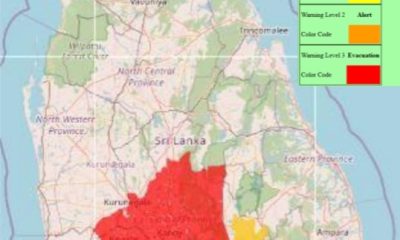
 News4 days ago
News4 days agoLevel III landslide early warning continue to be in force in the districts of Kandy, Kegalle, Kurunegala and Matale
-
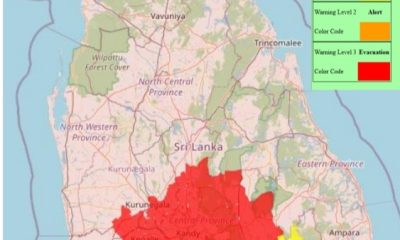
 Latest News7 days ago
Latest News7 days agoLevel III landslide early warnings issued to the districts of Badulla, Kandy, Kegalle, Kurunegala, Matale and Nuwara-Eliya
-
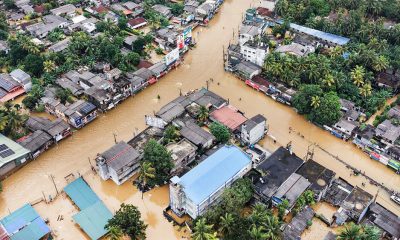
 Features7 days ago
Features7 days agoDitwah: An unusual cyclone
-
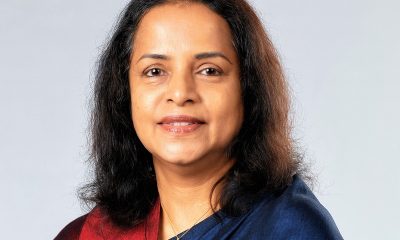
 Business3 days ago
Business3 days agoLOLC Finance Factoring powers business growth
-

 News3 days ago
News3 days agoCPC delegation meets JVP for talks on disaster response
-
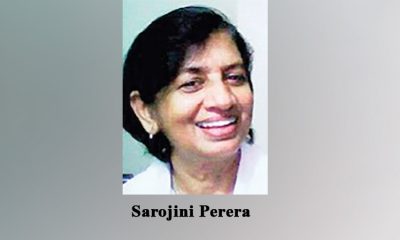
 News3 days ago
News3 days agoA 6th Year Accolade: The Eternal Opulence of My Fair Lady



